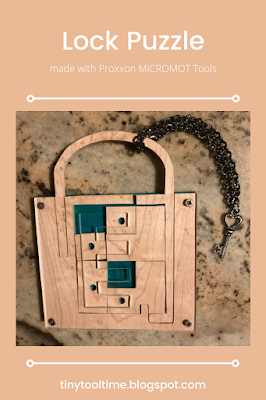This project combines two of my favorite things—beautiful woods and lovely kitchen utensils. I used a length of 1/8" thick bloodwood for this spreader. I love its unique coloring and graining and how it sands to an almost glass-like smoothness. If you're making any kitchen utensils, always be sure that the wood you select is food safe.
I used these Proxxon tools:
- Proxxon Bandsaw MBS/E
- Proxxon Disc Sander TG 125/E
- Proxxon Delta Sander OZI/E
- Proxxon Precision Vice FMZ
Here's how I made the Bloodwood Spreader:
- Print out the Spreader Pattern. Mount the spreader pattern on blank. Cover one side of the blank with painter's tape. The painter's tape makes removal of the pattern easy without leaving any sticky residue. Mist the back side of the pattern with spray adhesive, and mount on the taped blank.
- Cut the shape on the bandsaw, or you can use the scroll saw.
- Use the disc sander to round the edges of the handle. Taper the edge of the blade to form a wedge with the bottom sanded into a knife edge.
- Mount the Delta sander into the precision vice, and continue shaping and sanding the piece. Working on the mounted Delta sander makes fine detail sanding easier. Use progressively finer sandpaper grits—150 and 220.
- Next, complete the piece with hand sanding use 320 and 400 grit sandpapers.
- Finish the spreader with a coat of butcher block oil.
 |
| Carole |













































